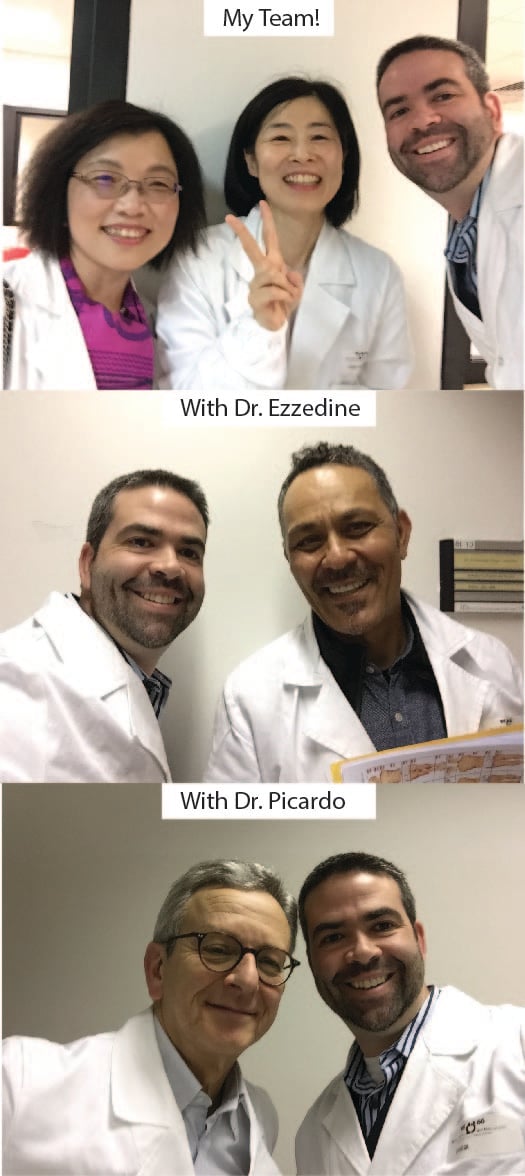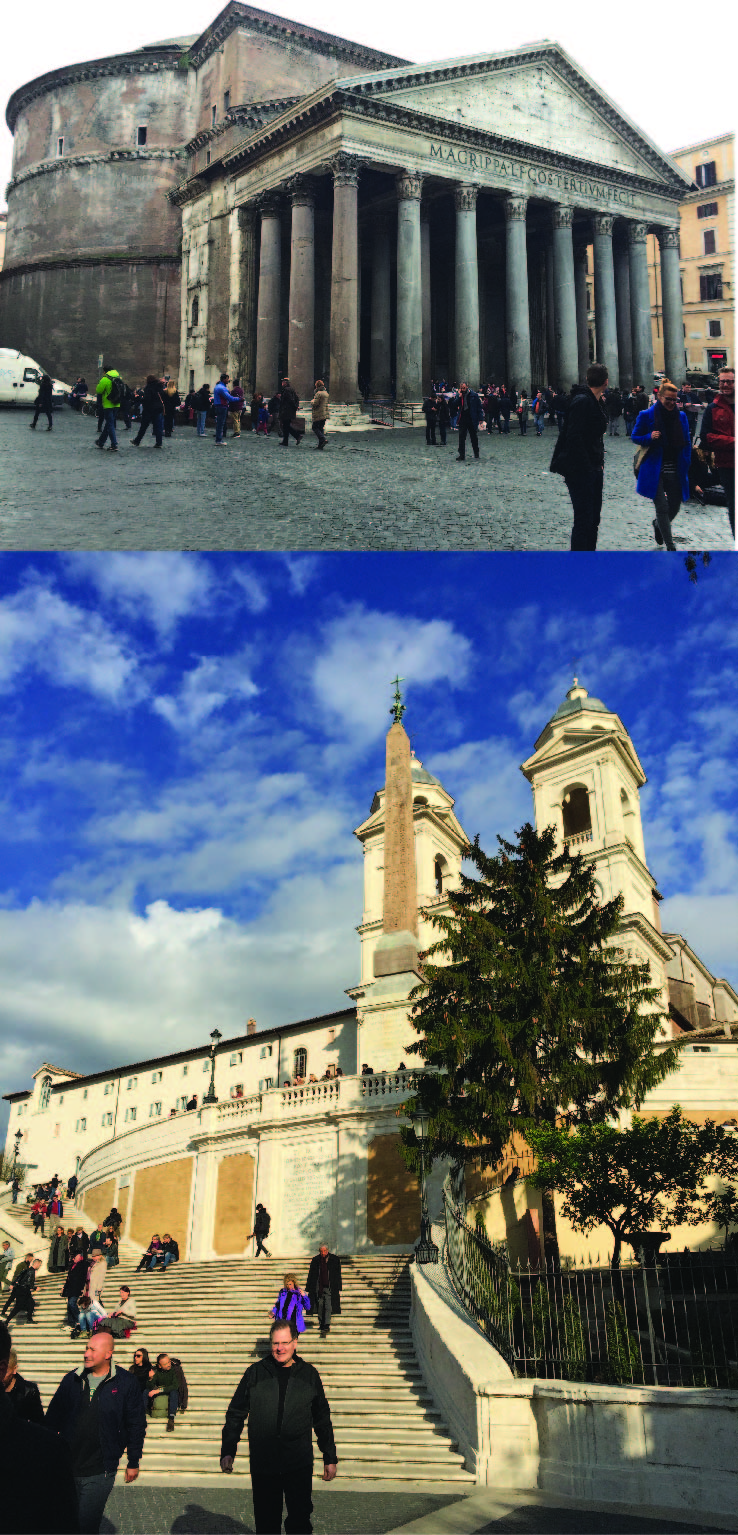Wednesday, December 14, 2016
|
 I just returned from the first Vitiligo International Symposium (VIS) held in Rome, Italy, where physicians and scientist from all over the world met to discuss their research. It was a great success, with over 200 participants from 32 different countries, including Italy (of course), the USA, the UK, Australia, South Africa, China, Japan, South Korea, Singapore, Germany, Egypt, Brazil, France, Morocco, Canada, India, Belgium, Taiwan, and others. The VIS was a 2-day conference that covered every aspect of vitiligo, including clinical treatments, how to measure improvement, basic science research to find out what causes vitiligo and how to find new treatments, etc.
I just returned from the first Vitiligo International Symposium (VIS) held in Rome, Italy, where physicians and scientist from all over the world met to discuss their research. It was a great success, with over 200 participants from 32 different countries, including Italy (of course), the USA, the UK, Australia, South Africa, China, Japan, South Korea, Singapore, Germany, Egypt, Brazil, France, Morocco, Canada, India, Belgium, Taiwan, and others. The VIS was a 2-day conference that covered every aspect of vitiligo, including clinical treatments, how to measure improvement, basic science research to find out what causes vitiligo and how to find new treatments, etc.
 The meeting was opened by the chairs, Dr. Mauro Picardo (Italy) and Dr. Alain Taieb (France), who heroically pulled together this outstanding gathering of so many prominent physicians, researchers, patient advocates, and pharmaceutical companies all interested in vitiligo. Dr. Richard Spritz gave a plenary lecture updating us on his latest discoveries in the genetics of vitiligo, which confirm the importance of the immune system in driving the disease as well as other important pathways, including those that result in melanin production within the pigment-producing cells, the melanocytes. Keep an eye out for another blog post of an interview I’ve had with him to summarize his results and their implications.
The meeting was opened by the chairs, Dr. Mauro Picardo (Italy) and Dr. Alain Taieb (France), who heroically pulled together this outstanding gathering of so many prominent physicians, researchers, patient advocates, and pharmaceutical companies all interested in vitiligo. Dr. Richard Spritz gave a plenary lecture updating us on his latest discoveries in the genetics of vitiligo, which confirm the importance of the immune system in driving the disease as well as other important pathways, including those that result in melanin production within the pigment-producing cells, the melanocytes. Keep an eye out for another blog post of an interview I’ve had with him to summarize his results and their implications.
I then opened my session, New Insights from Basic and Translational Research, with a brief summary of the progress that has been made by many investigators over the last 30-40 years. We had many brief talks about late breaking research findings from all over the world, and we had an opportunity to ask questions and discuss the implications of these findings. Other sessions included Biomarkers of Vitiligo Activity, Measuring Vitiligo Severity, Managing/Treating Vitiligo, Human and Animal Research Studies, New Treatment Targets, and New Clinical Observations. There were well over 50 brief talks in total, and an additional 50+ posters displayed, representing a large body of work dedicated to better understanding vitiligo and how to treat it. Other plenary lectures included Dr. Ralf Paus from Germany, who talked about where melanocyte stem cells live and how to mobilize them during treatment, Dr. Caroline LePoole, who updated us on her work with HSP-70 in vitiligo, and Eddy Wang, who summarized the success using JAK inhibitors for the similar autoimmune disease, alopecia areata.
Over the two days prior to this meeting, a number of clinical experts in vitiligo attended a “pre-meeting” workshop at the Instituto Dermatologico San Gallicano, where vitiligo patients get their treatment in Rome. During this workshop, we discussed the best methods to measure vitiligo (which will be important when we soon start clinical trials), and we actually assembled into small groups and tested two different scoring methods on some Italian vitiligo patient volunteers who agreed to let us examine them for the workshop. It was a wonderful opportunity to get together and work on an important problem, and I think it was the first time so many vitiligo experts from so many parts of the world examined patients together – it was both strange and exciting! I added a picture of my “team”, which included Dr. Flora Xiang (Shanghai, China), Dr. Hee-Young Kang (Suwon, South Korea), and me. I also snapped selfies in the hall with Dr. Ezzedine (Paris, France) and Dr. Picardo (Rome, Italy).
 Of course, we also took the opportunity to socialize over some amazing Italian cuisine, and I stole away for a short time to see the Pantheon and the Spanish Steps (pictures at right). Now I really need to return to tour the Coliseum and many other wonderful sights of Rome that I missed because I was so focused on vitiligo and my friends from all over the world. This meeting again made me thankful that all of these brilliant international clinicians and scientists speak English so well, because I certainly don’t speak Italian or any of the other 20+ languages represented at the meeting. It also reminded me of why I do what I do, because I want to make life better for my vitiligo patients, as do all of these other people from around the world. There are certainly other things these brilliant people could be spending their time on, but we have made ourselves a family of physicians and scientists who have teamed up to help our patients who suffer from vitiligo. And it’s worth it!
Of course, we also took the opportunity to socialize over some amazing Italian cuisine, and I stole away for a short time to see the Pantheon and the Spanish Steps (pictures at right). Now I really need to return to tour the Coliseum and many other wonderful sights of Rome that I missed because I was so focused on vitiligo and my friends from all over the world. This meeting again made me thankful that all of these brilliant international clinicians and scientists speak English so well, because I certainly don’t speak Italian or any of the other 20+ languages represented at the meeting. It also reminded me of why I do what I do, because I want to make life better for my vitiligo patients, as do all of these other people from around the world. There are certainly other things these brilliant people could be spending their time on, but we have made ourselves a family of physicians and scientists who have teamed up to help our patients who suffer from vitiligo. And it’s worth it!